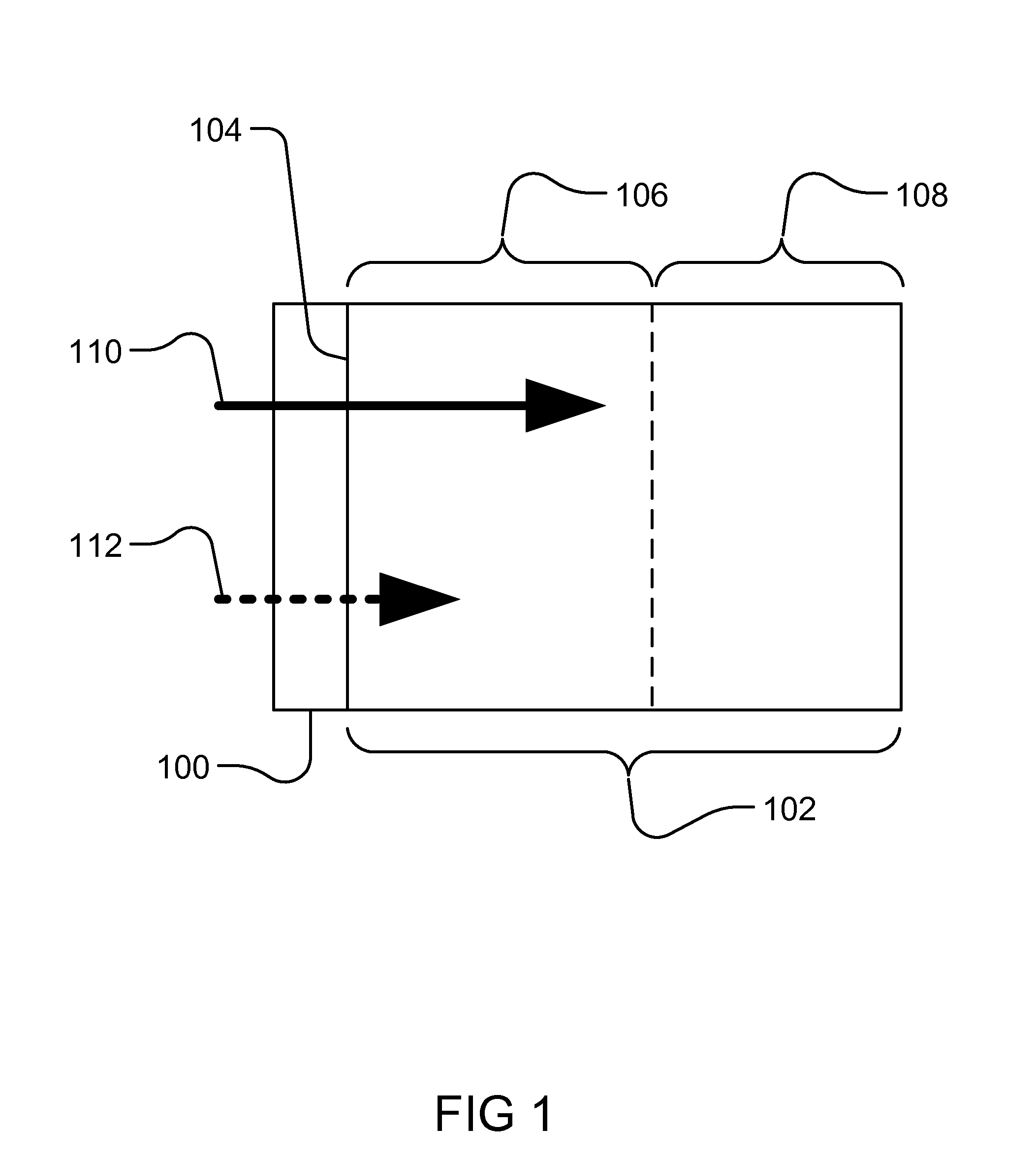Betavoltaic battery with a shallow junction and a method for making same
a technology of betavoltaic batteries and shallow junctions, applied in the field of betavoltaic batteries with shallow junctions and a method for making same, can solve the problem of not being able to provide power generation, and achieve the effect of reducing or eliminating losses through electron-hole pair recombination
- Summary
- Abstract
- Description
- Claims
- Application Information
AI Technical Summary
Benefits of technology
Problems solved by technology
Method used
Image
Examples
Embodiment Construction
Maximizing Charge Collection in SiC Betavoltaics
Influence of Junction Depth
[0016]To quantify the extent of the surface, it is necessary to know the penetration depth, or range, RB in μm, of the beta electron in the semiconductor, which is given as:
RB(μm)=[4×E01.75(keV) / 100] / ρ(g / cm3) (1),
where E0 is the incident beta energy in keV, and ρ is the density of the semiconductor in g / cm3. The penetration depth is simply a function of the energy spectrum of the β-radiation, which is known. The spectrum, to first order, is given by
ƒ(E0)=K√{square root over (E02+2mc2E0)}(E0(max)−E0)2 (2)
where f(E) is the energy distribution function, m the electronic mass, c the speed of light, and K a normalization constant, such that we have:
[0017]∫0E0(max)f(E0)ⅆE0=1(3)
[0018]The energy extends to a maximum, E0(max), that typically lies at ˜3 times the mean energy. For a given beta emitting isotope, a single E0(max) completely specifies the spectrum, as eq. 2 indicates. There is a Coulombic penetration...
PUM
 Login to View More
Login to View More Abstract
Description
Claims
Application Information
 Login to View More
Login to View More - R&D
- Intellectual Property
- Life Sciences
- Materials
- Tech Scout
- Unparalleled Data Quality
- Higher Quality Content
- 60% Fewer Hallucinations
Browse by: Latest US Patents, China's latest patents, Technical Efficacy Thesaurus, Application Domain, Technology Topic, Popular Technical Reports.
© 2025 PatSnap. All rights reserved.Legal|Privacy policy|Modern Slavery Act Transparency Statement|Sitemap|About US| Contact US: help@patsnap.com



